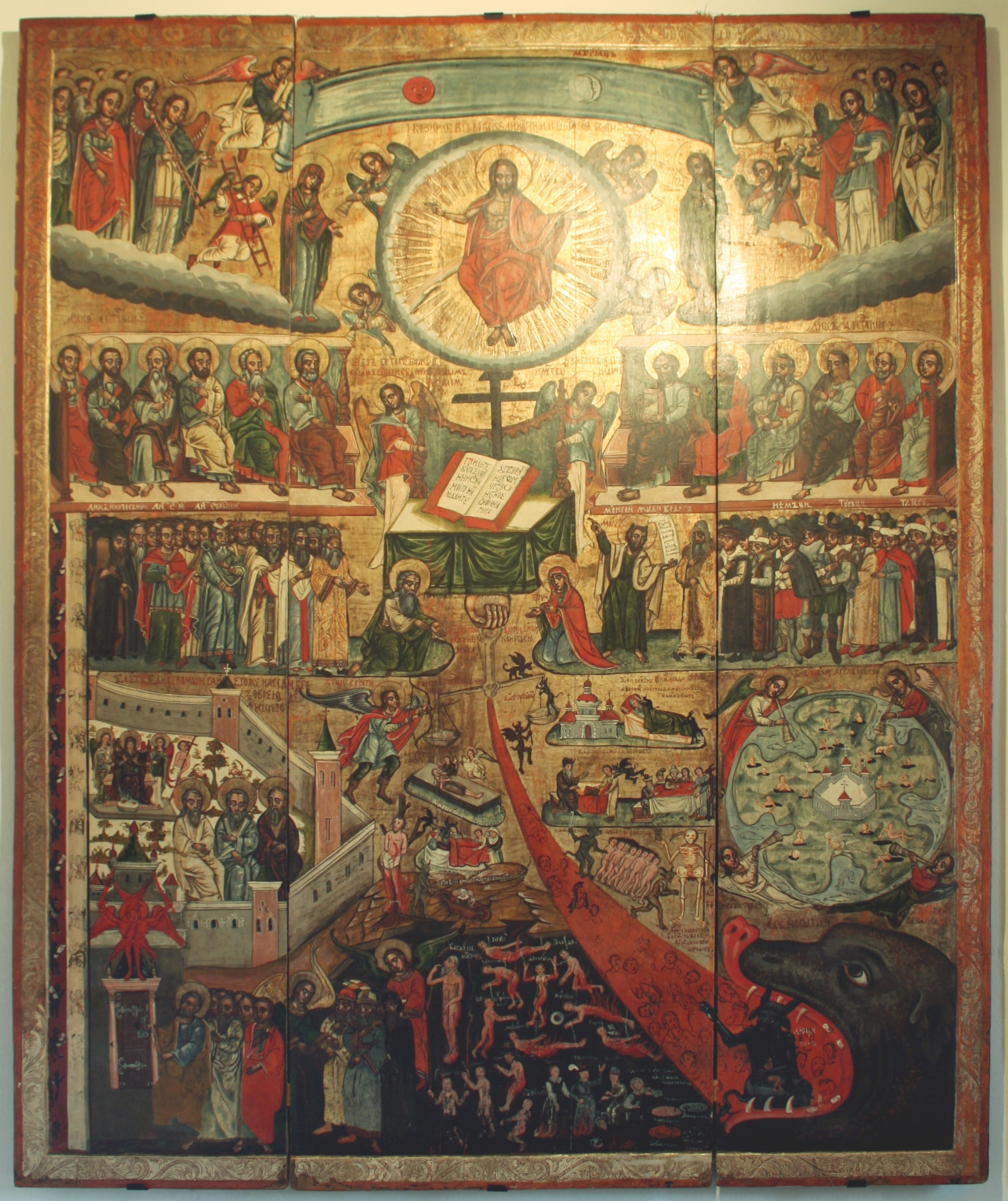Some interesting words from Michel Quenot's book 'The Icon':
"The icon is the model of holiness, of presence and a revelation of the cosmic transfiguration to come; it offers itself to all of us like a beautiful open book. But we must know how to read the icon to be able really to see those faces we pass every day in our streets and discover in them that 'unique plant' grafted onto Christ, the Tree of Life" p.159
Teilhardian thought about the Omega point, the fulfillment point of time, is I think what the Tradition describes as the Day of Judgment, the moment of decision when all things come together in Christ and there is a new heaven and a new earth. This is a complete transfiguration of matter, of the cosmos, of both temporal and spiritual realms and it happens in the Person of the Word. All icons, if we follow the point made by Quenot, refer us to that future point and in a certain sense pre-figure it. At the same time, in doing so, it shows us the way to see the transfiguration already taking place in humanity through the all permeating Presence of Christ, a Presence like the sap in a tree. This is, I am thinking, what Teilhard is expressing as evolution, of the growing towards a mystical transformation of the cosmos. I think David you will have some salient points to flesh this out, but am I on the right track here?
In the icon above, The last Judgment - an icon 17th cent. from Lipie, Historic Museum in Sanok, Poland, might a first glance seem a bit remote from images of the Sacred Heart, but there are some interesting elements here. Notice Christ is in the centre of a radiating sun, His glory is a Light of Fire,also shown by the blue/green rings which usually symbolise the Divine Light. It is also forcefully a very communal image: people are everywhere, the crowds thronging, literally everyone is there for better or worse, all of history has converged at this moment after which all things will be definitively changed. Paradise is a place for people, relationships, being together. Notice those entering Paradise (the walled, flowering garden on the bottom left guarded by a red winged seraphim) do so as a group, and the Patriarchs and the Blessed Mother await them. In contrast those thrown into the dark pit are segregated one from the other, isolated, alone, cast out. There is no love, nothing to bind one with another, they float in the darkness lost, alone, tormented. Also notice that Paradise is a walled GARDEN, a place where nature fulfils itself, evolves to a pinnacle of beauty, a process of transformation that is a work of Divine Grace also known as the Divine energies. To the right we see the four trumpeters heralding the resurrection of the dead, their physical bodies coming out of the earth.
It is, I think, a very Teilhardian image, and helps us to make some visual, iconic connections with his thought. This is important for helping me to find the starting points for the design of the image itself. I am beginning to formulate some possibilities now. The most awkward image is the heart, but after some prayerful requests for inspiration I have something in mind which I think will work, inspired by what David wrote yesterday, describing the vision of St Margaret Mary and a translucent heart, on fire with Light. Hopefully I might have something to post on this important development tomorrow.
Our Lord's Heart is indeed ineffably beautiful and satisfying: it exhausts all reality and answers all the soul's needs. The very thought of it is almost more than the mind can compass. Teilhard de Chardin S.J.
Pages
- Home
- The devotion to the Sacred Heart.
- Visit Elias Icons
- Description : angels saints &lettering.
- Contact Blog
- Praying with the Icon
- Who was Teilhard de Chardin?
- Benedict XVI and the Sacred Heart
- Basil Hume and Teilhard
- Popes and Evolution
- Benedict XVI and Teilhard
- Teilhard's Litany and Henri Pinta's painting
- Saint John Paul and the Sacred Heart
- Sacred Heart fresco, Paray-le-Monial
- Félix Villé 's Sacred Heart

No comments:
Post a Comment